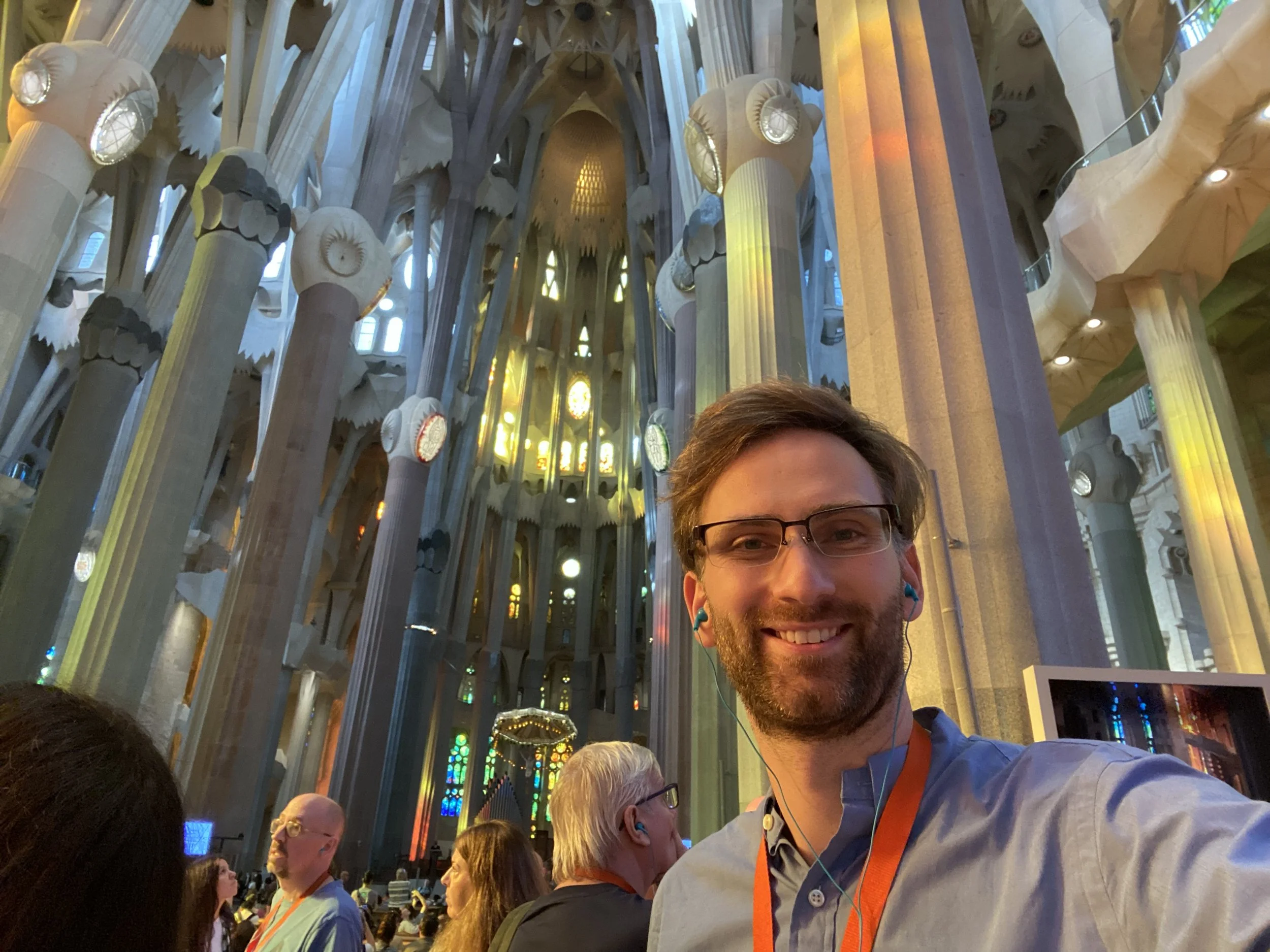Design: What do you think about Design?
Blog Context.
A photo with a group of the MIT Tech Review 35 under 35 Global Innovators from MIT EmTech 2022. Happy to have contributed to the judging; truly impressed with this year’s cohort.
As good discussions start, this one started at a dinner party, at MIT Tech Review’s Emerging Technology (EmTech).
“What do you think about Design?” echoed Brian Bryson across the long table.
What could our table seated with professionals from all kinds of backgrounds reply?
One by one diverse opinions rooted in the distinct experiences stirred the table voiced, spanning those of experienced designers, such as Sarah B. Nelson, Chief Design Officer at Kendyl, technologists, such as Benoit Schillings, CTO at Google X Moonshot Factory, product leads, such as from the creative DALLE, and three generations of TR Global Innovators under 35.
Their comments inspired me to the following thoughts on
“Why Design Matters?”
Basílica i Temple Expiatori de la Sagrada Família, Barcelona, designed by the Catalan architect Antoni Gaudí. Photo from the interior (2022).
Design.
Have you seen Gaudi?
Two days ago, I experienced Gaudi’s La Sagrada Familia in Spain for the first time. It made me think:
A pile of stones is not a house.
A pile of stones with design and execution can form a house.
A pile of stones endowed with design by purpose and art can birth a breathtaking cathedral.
Alone, a pile of stones is not much.
However, that same pile of same stones transformed with power of good design can become significant.
Similarly, a pile of oil paint, people, money, stuff on its own won’t sum up to much, unless it comes together under good design that can elevate it from a mere pile of stuff to art, product, useful tool, or a desirable result.
In this sense, Design (capitalized to emphasize its significance) is the spirit that moves stones from stuff to creation.
The same way Gaudi’s design set in motion those stones to form La Sagrada Familia.
Design is essential.
Image by macrovector on Freepik.
Inward-Facing Design: Design sets the foundation on which to build.
Be it the design of a research study, an organization, or a product, good internal-facing design forms a strong foundation — a metaphorical skeleton on which to build taller. A poor initial research-project design can doom the project and waste everyone’s time. A good initial design of a software product’s internal architecture, abstractions, and interfaces makes scaling the product and its long-term lifespan a leap above others. Of course, design requires good execution to be realized. But good execution without good design isn’t going very far. (See Personal Example below.)
Outward-Facing Design: Design is how you communicate and connect.
The design of outward-facing features, like the edifice of a building, the user interface and experience, the figure of a research publication, serves to communicate a message. That message can either attract or repel an intended audience. Good design will communicate and attract the right audience. A different design could likewise drive the right audience away.
Personal Example: Qiskit Metal Quantum Processor Design.
To give you a personal example, I rebuild the design for Qiskit Metal twice from the ground up. (Qiskit Metal is the world’s first electronic design automation (EDA) tool specifically for quantum computers, see this Forbes review by Paul Smith-Goodson.)
When I started Qiskit Metal in 2019, I didn’t fully know what it would become yet. I made choices to get things done fast and demonstrate cool results quickly. This worked. At that phase.
About 9 or 10 months into the project however, as Thomas and other people started to join and Metal grew and grew and become more complex, more ambitious, more encompassing of more classes of quantum processors, the metaphorical tower I was building was getting too tall and wobbly for the organic design I had set in motion at the start.
Imagine a Jenga tower, with patch upon patch due to the lack of design.
Image credit: Svan Jenga Tower
I decided the sustainable way forward was to scratch the entire codebase. Erase it, clean break. Toss over the shoulder a year of non-stop coding. Why? Because you can’t build tall on a shaky foundation.
I spent the next 2-3 months digesting lessons, clarifying with folks and redesigning from the ground up. We mapped out every class, interface, workflow on the white board and on paper.
I’m happy we did. Now, 2-3 years later, we continue to build on this much more solid foundation. Dozens of engineers, physicists, and software developers have contributed to build hundreds of thousands of lines of code, docs, and tutorials on top of it.
The key was to set the right foundation in place. Otherwise, it would not grown as tall and succeeded as widely in the way it did.
The tricky bit is, I could not have set a solid foundation in place to begin with. Not possible. It’s impossible to faithfully and fully design ahead if you haven’t done it before in the same operating context. Any project with a vision that hasn’t been done before will run into this. You have to adapt, revise, and often scratch and rebuild. Hence, the idea of agile.
A solid design foundation or lack of will give you base on which to build a solid high tower or a wobbly Jenga one.
Next time you set up a project, a research study, or other, consider:
How would Gaudi have gone about to design this pile of rocks? :)
What do you think of Design?
How has Design come into play in an important way in your career?
What’s an important lesson you have learned about Design?
Please do share in the comments below…




